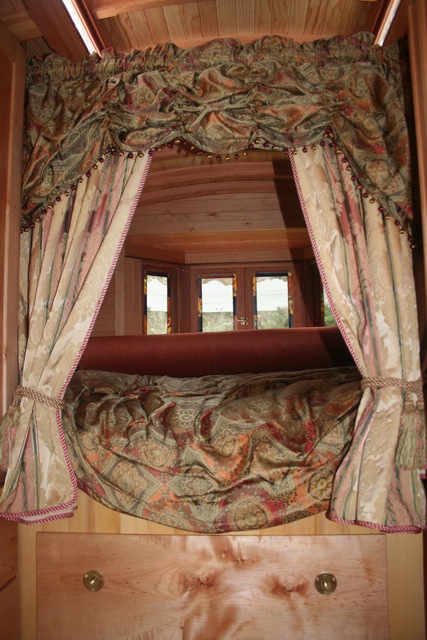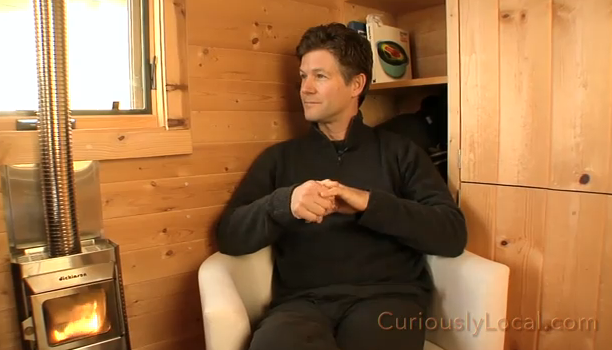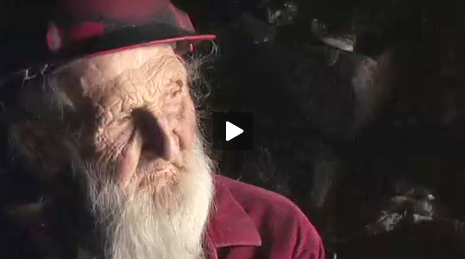Tiny House Composting Toilet – Worth It?
If you are looking into building your own tiny house, or are simply a fan of tiny home shows, you have probably wondered: How do those composting toilets that I see work, and how do they get rid of their bodily waste?
A tiny house toilet is a thing of wonder, as these tiny homes are often completely off the grid. We are here to answer all your questions about tiny house toilets, and also look at some alternative tiny house toilet options, so read on!
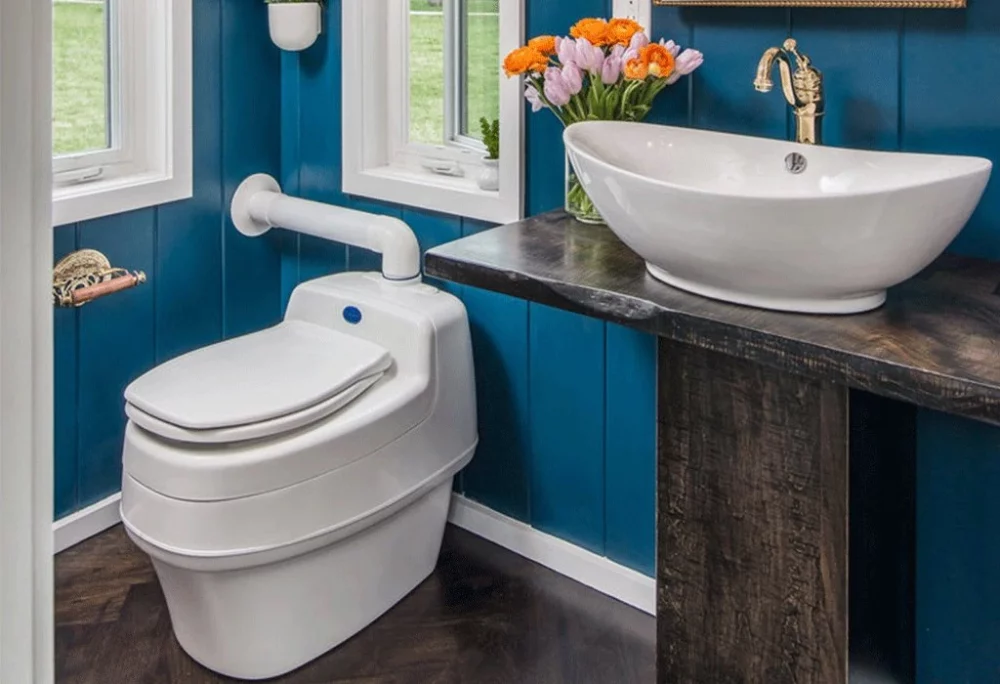
Contents
- 1 What Is a Self-Composting Toilet?
- 2 How Does a Tiny House Composting Toilet Work?
- 3 Do All Tiny Houses Have Composting Toilets?
- 4 How to Maintain a Composting Toilet
- 5 Best Composting Toilet for Tiny House
- 6 Composting Toilet Pros and Cons
- 7 Is a Composting Toilet Worth It?
- 8 Composting toilets alternatives
- 9 How Much Is a Composting Toilet for a Tiny House?
- 10 Where to Buy Portable Composting Toilets for Your Tiny House
- 11 Composting toilets FAQs
What Is a Self-Composting Toilet?
A composting toilet is a waterless toilet that makes use of natural decomposition and evaporation to get rid of waste. These types of toilets are extremely popular at off-grid homes, cabins without water, and even campsites.
You get two types of self-composting toilets:
- self-contained composting toilet
- centralized composting toilet
Self-contained composting toilets are easy to install and commonly used in tiny homes. The toilet and the composting chamber are one unit that is installed in the home, and the composting process occurs within the unit. They are completely waterless.
Centralized composting toilets have large collection tanks that slope down to allow for waste movement during the decomposition process. They sometimes use water and foam during composting.
How Does a Tiny House Composting Toilet Work?
Composting toilets treat liquid and solid waste through the composting process. Solid waste is mixed with dry materials, like wood chips or peat moss, which allows the waste to be turned into compost through bacteria that break down waste.
These toilets typically have a urine diverter, which separates the urine from the solid waste. The compost and urine can then be used in the garden or can be thrown away.
Composting toilets consist of:
- A holding tank / solid waste compartment where waste is decomposed.
- A vent that removes odors.
- A toilet fan to provide oxygen to the holding tank.
- Bulking material like sawdust or peat to help with composting and also get rid of some smells.
- Urine diverter that collects liquid waste.
Do All Tiny Houses Have Composting Toilets?
Not all tiny homes come with a composting toilet, because not all tiny homes are off the grid. Those that are connected to a water source and sewer system can have a regular flush toilet or even an incinerating toilet.
How to Maintain a Composting Toilet
Tiny living is not always easy, and the same is true when it comes to maintaining your compost toilet. There are a few steps you must take to keep your toilet odor-free and make sure the composting process continues.
1) Clean it daily
Your compost toilet will require more cleaning than a traditional flush toilet, because it is, at the very basic level, a toilet over an open pit of waste. Make sure to scoop out the compost pile daily or every second day (depending on use) to prevent odors from escaping.
2) Use sawdust properly
It is easiest to just keep a container of mulch, peat moss, or sawdust next to your toilet. When someone is done doing their business, they can simply scoop some mulch into the toilet. This will help dry out the waste quicker and control smells.
3) Avoid using water
If you for some reason want to throw water into the toilet, it is best to refrain from doing so. Water will allow bad bacteria to flourish, and will also make it difficult to scoop out.
4) Only human waste
Apart from waste, toilet paper, and mulch nothing else should go into your compost toilet. Putting anything else in will hamper the decomposition process.
Best Composting Toilet for Tiny House
Below are some of the best composting toilets for your tiny house.
Lovable Loo
The Lovable Loo is an incredibly simple compost toilet that can be used indoors permanently. It requires no venting and does not have a urine diverter. Despite this, when controlled properly, it does not release any odors.
It is extremely affordable and has a straightforward installation process, and it can even be shipped via UPS!
ECOJOHN Basic Compost Toilet
The ECOJOHN basic compost toilet mimics the look of a traditional toilet, and unlike the Lovable Loo, it does separate liquid waste from the solids. It also makes use of a vent to get rid of any smells that might escape.
It comes with a removable toilet bowl liner, which allows for easy cleaning in the absence of water.
Laveo Dry Flush Portable Toilet
This toilet is perfect for tiny house living, as well as camping. Although it is not exactly a compost toilet, it has become a popular choice amongst waterless toilet fans.
The Laveo Dry Flush Portable Toilet uses electricity, supplied by batteries, to store your waste in bags at the bottom of the toilet when you flush. You can then simply remove and dispose of the bags.
It is portable, easy to use, flushable, and free of chemicals.
Nature’s Head Toilet
The Nature’s Head dry composting toilet is a best-selling tiny house composting toilet. Installation is fairly easy – you simply need to install the vent system and connect it to an electrical system. The electricity is for running the fan system.
The toilet lasts long and can be used up to 6 weeks by two people before required being emptied out.
Sun-Mar Mobile Composting Toilet
The Sun-Mar toilet was originally designed for travelers in boats and RVs, however, it has become a hit with tiny home dwellers.
Its installation involves mounting brackets, and it comes with a footstool which can be removed when it is time to empty out the holding tank.
The toilet makes use of patented Bio-drum technology, which allows for fast and odorless decomposition.
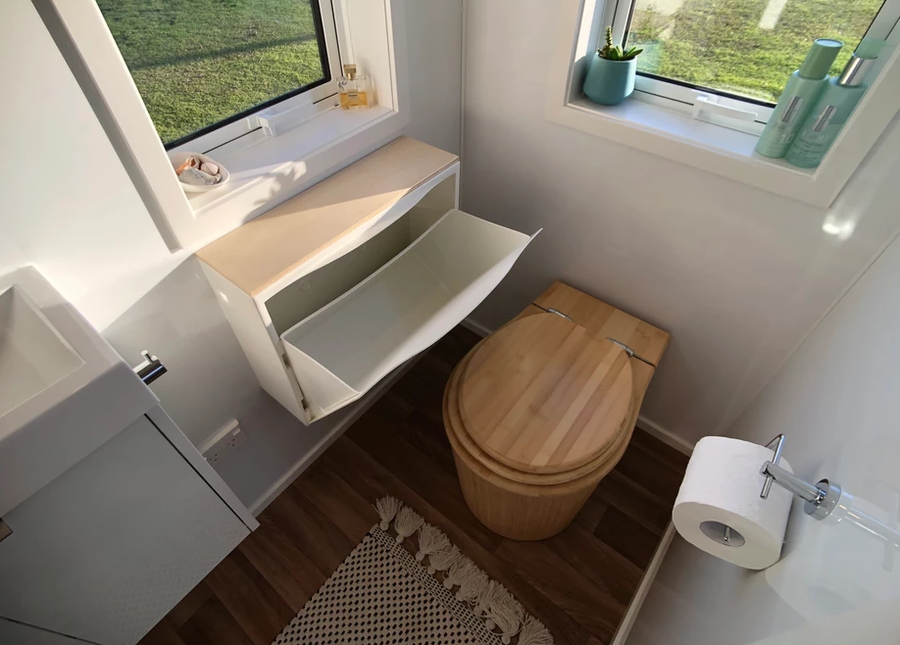
Composting Toilet Pros and Cons
Pros
Environmentally friendly
Composting toilets are environmentally friendly because they don’t use or waste any water, and they use very little electricity – only to power the fan.
Cost-effective
Your main cost with a composting toilet is to purchase it! There is no other hidden cost, and since it can be used off-grid, you won’t have to pay municipal fees for water, electricity, and sewage.
These toilets require very little maintenance and only require a scoop of mulch or sawdust to get the process going.
Saves space
Compost toilets can save space because they do not require a septic system or plumbing to install, and most are self-contained.
Easy to maintain
Although these toilets require emptying out of the compost, and regular cleaning since there is no water, you won’t have to deal with leaky pipes or broken flush mechanisms.
Cons
It’s not always practical
If you don’t have the option of throwing compost into a garden, or if you are not able to get a hold of mulch, then a compost toilet is not the perfect choice for your tiny home.
If a lot of people are using the toilet, you will have to empty it more frequently, which is more of a hassle than with a traditional toilet.
Might require electricity
Some higher-end compost toilets require electricity to power the toilet fan. Although this electricity could be provided by a solar battery system, it is something that tiny home buyers must keep in mind.
Odors are produced by some composting toilets
Some composting toilets come without fans, urine diverters, or vents. This means there is a greater chance of odors developing. However, if a toilet is properly maintained, and mulch regularly deposited after each use, the odors should be kept to a minimum.
Is a Composting Toilet Worth It?
If you live in a tiny home and you do not have access to municipal sewers or a reliable source of water, then a composting toilet is absolutely worth it!
Despite the extra maintenance these toilets require, the long-lasting costs of these toilets are way less than for a traditional toilet, making them well worth the initial investment.
Composting toilets alternatives
Incinerating Toilet
Incinerating toilets are able to burn refuse and turn it into ash, which can then simply be thrown out into the garden or bin. These toilets do require quite a bit of energy input to function but can run on gas or solar power to burn the waste.
BioGas Toilet
BioGas systems are relatively new in the tiny home, off-grid world. These toilets work with water to compost a liquid slurry. These toilets mimic traditional flush toilets, however, the waste is enclosed in an airtight container to prevent methane and other gasses from escaping.
Once decomposition has occurred (which can take anywhere from 6 months to a year), the slurry, or “compost tea” can be drained.
Regular Toilet
Even if you are off-grid, if you have access to a reliable source of water, you can easily install a regular flush toilet in your tiny home. In remote areas, you can simply make use of a septic tank instead of connecting to a sewer system.
How Much Is a Composting Toilet for a Tiny House?
The average installation and maintenance cost of a composting toilet is $1400. Different systems will have different costs and can be anywhere from $750 to $13,500.
Where to Buy Portable Composting Toilets for Your Tiny House
Compost toilets can be purchased online through the different compost toilet suppliers.
Composting toilets FAQs
Do you pee in a composting toilet?
Yes, most compost toilets will have a urine diverter, meaning they can be used for both liquid and solid waste. Even without the diverter, you can still urinate in a compost toilet.
Where do you empty a composting toilet?
You can scoop out the compost and add it to your compost pile to use in your garden, or you can throw it away.
What states allow composting toilets?
There are 27 states that allow composting toilets. See the list here.
Do composting toilets smell?
If you maintain the toilet correctly, it should not smell. Vents and fans further reduce any odors that might arise.
Do composting toilets need electricity?
Some may require electricity for the toilet fan, however you get models that don’t.
Do composting toilets need water?
No. Composting toilets are waterless.

